This is part one of a two-part post. For part 2, click here
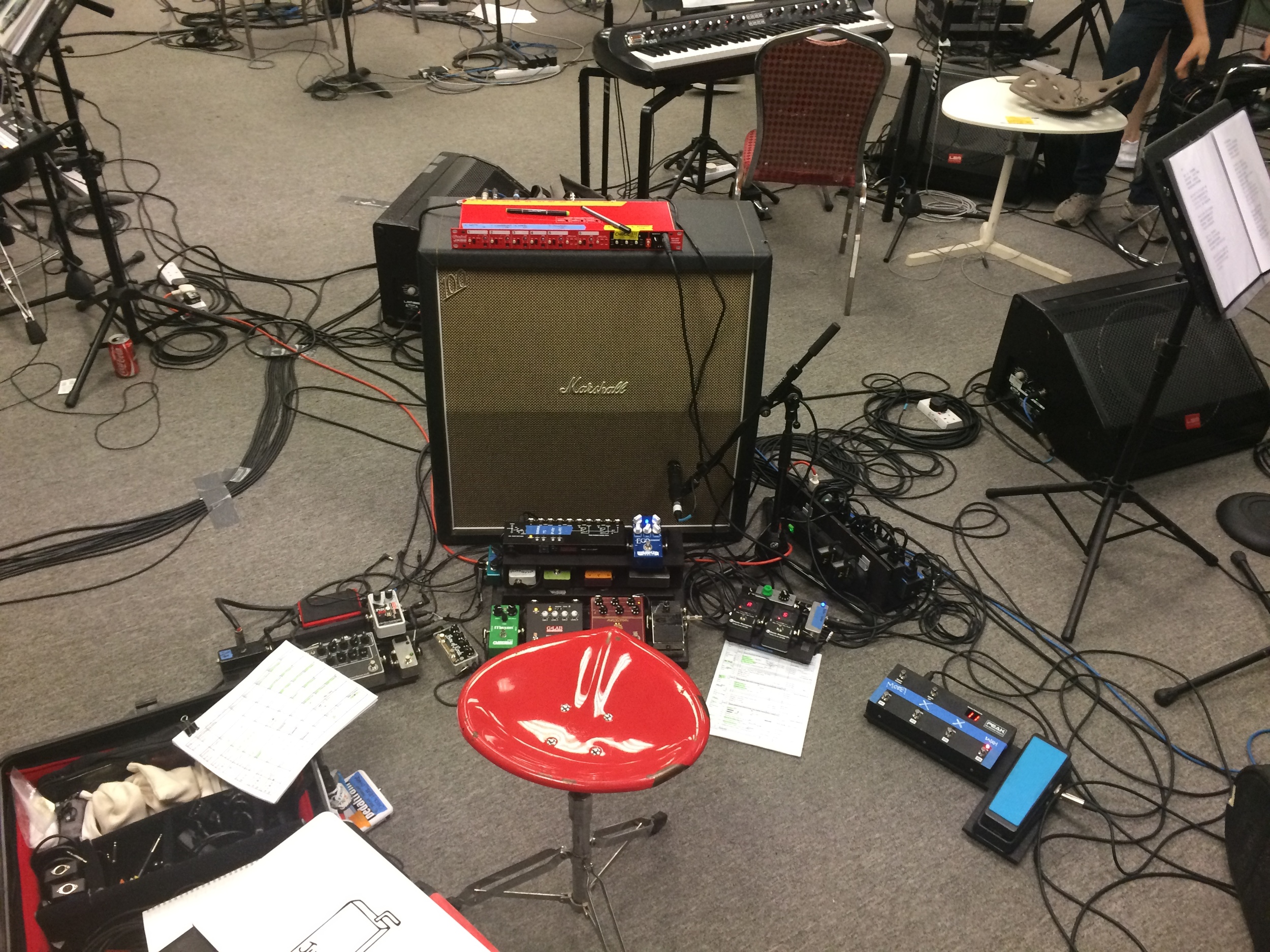
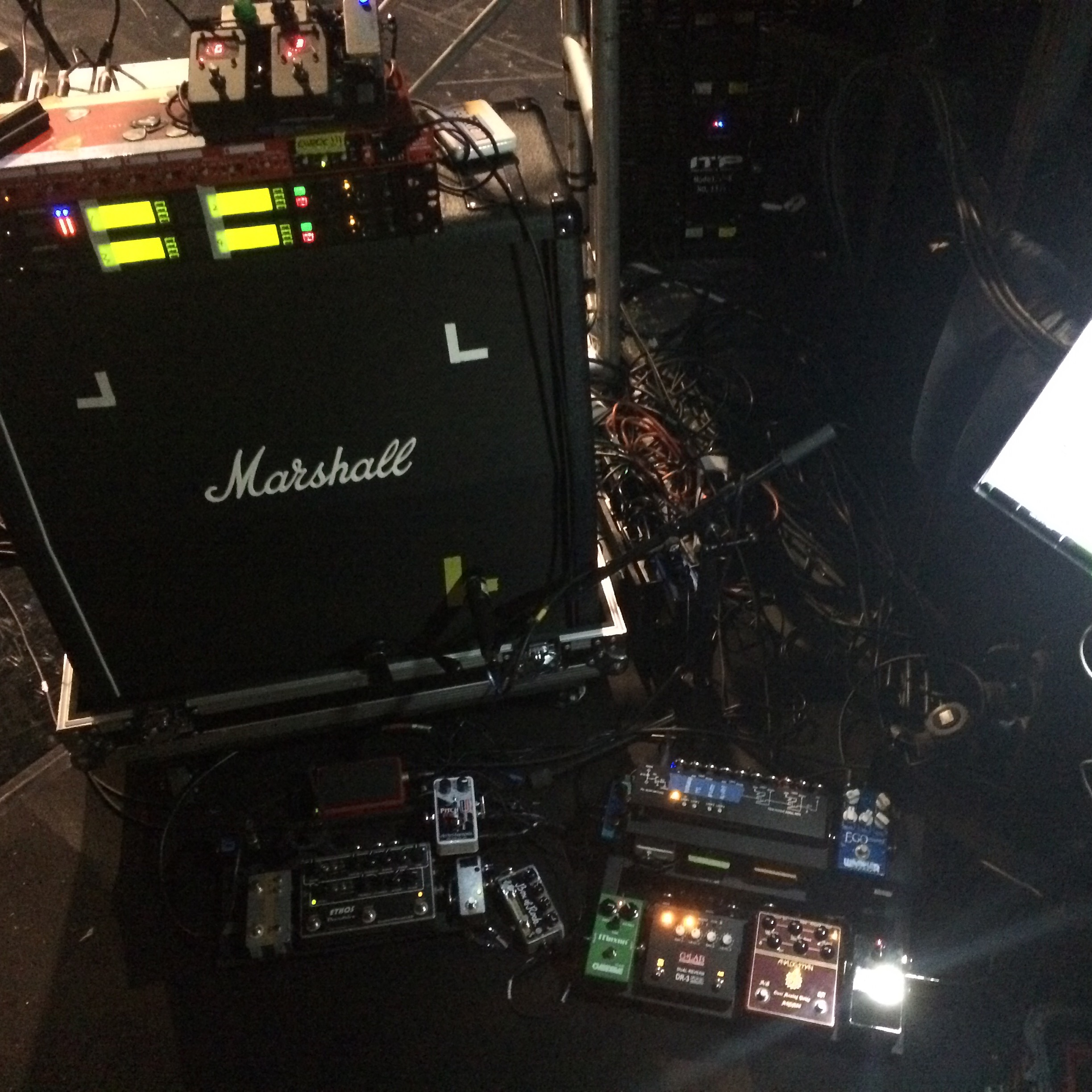
'Tis The Season
With summer in a closing distance, a lot of artists we work with are getting their gear prepped and updated for changes and modifications. One of such artists: Khalil Fong, has a few music festival gigs coming up. The previous tour allowed his existing rig to be heavy, large and complex. Music festival gigs are a whole different deal. Bands coming on and off stage, short setup times in between acts, and in general, total chaos on stage. This combined with the existing tour gear would make it a huge hassle to set up, so as his guitar tech, I decided to build him a smaller pedalboard that would be smaller, lighter, and most importantly, simpler and quicker to set up.
Planning
So as you can see above, Khalils tour rig is pretty complicated. It's split into 5 sections: Control, Tuning, Effects Board, Amp Board, Stage Board. This rig allows me to have great flexibility as far as signal routing and tone control, as well as allowing Khalil to have control over certain aspects of his tone via the MIDI footcontroller, and the remote wah controller. But for a new board, we first need a plan.
I do plan to keep a similar architecture with the new board, but slightly simpler without MIDI, and have everything on 2 boards: the off-stage board and the on-stage board. Khalil will still need control of his wah and a boost pedal for his solos. Otherwise, everything else is off-stage where I control. We plan to omit MIDI capabilities and remote wah functions (we will visit this topic at a later time). On the tour rig, MIDI and the remote wah allowed the actual audio signal to be kept in the off-stage boards, without having to travel 100ft or more of cable to and back center stage.
What we need
On the new board, we are going to have to run the audio signal to and back from Khalil's board on center stage. Now as most guitarists know, running a guitar signal through a long length of cable will degrade the signal. So for starters, we will need a buffer that is designed to drive long lengths of cable. Right after the buffer, we will want, in effect (no pun intended!), an effects loop, which will then connect to the rest of the pedals an amp into the cab. Everything seems straight forward aside from the effects loop, given stage limitations.
Limitations
- On music festival stages, the variety of resources available is usually far more limited than equipment and stage crew dedicated to your act on tour.
- I know that this effects loop will need to run around 50ft or so cable to and another 50ft back. We don't plan to use our flight cases carrying cables. The reality of airline companies is certainly a factor to consider when building this board.
- The cables that are most common and will be available in abundance on festival stages are: 1/4" mono cables, 1/4" stereo cables, and XLR mic cables. As far as 50ft cables go, more often than not, the stage will only have XLR mic cables.
- Power strips (and their routing) provided at music festivals are questionable at best.
- Lighting, wireless systems, stage effects, etc. will wreak havoc noise-wise to guitar gear.
With these limitations in place, an effects loop has to be designed to satisfy these conditions, yet perform with the least amount of compromise.
The Solution
So our goal was to build an effects loop, that would:
- Work with a minimum number of (preferably XLR) cables.
- Have a built-in buffer
- Be able to provide 9v power to the center-stage board
- Have some sort of audio isolation to help with hum or noise
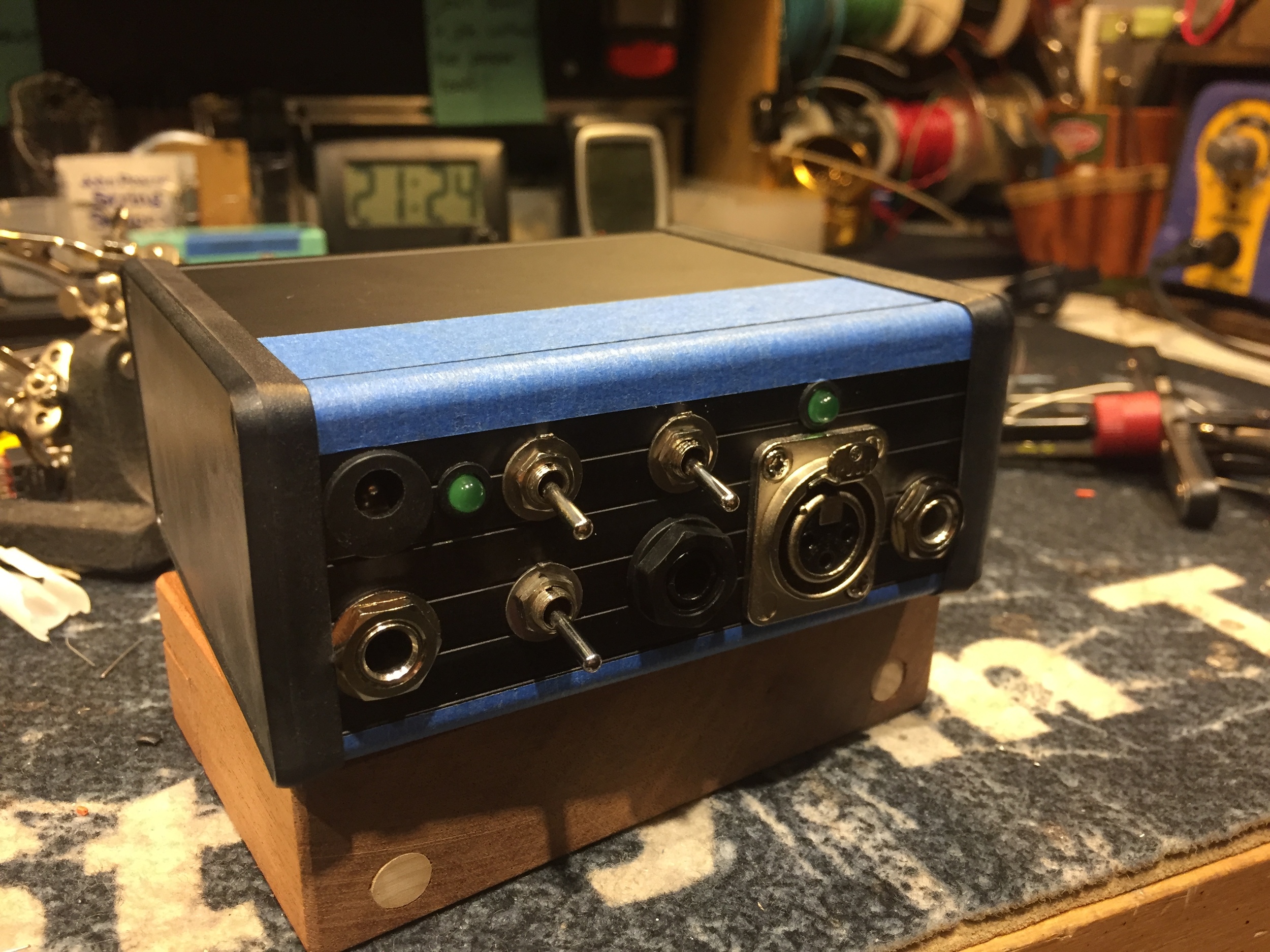
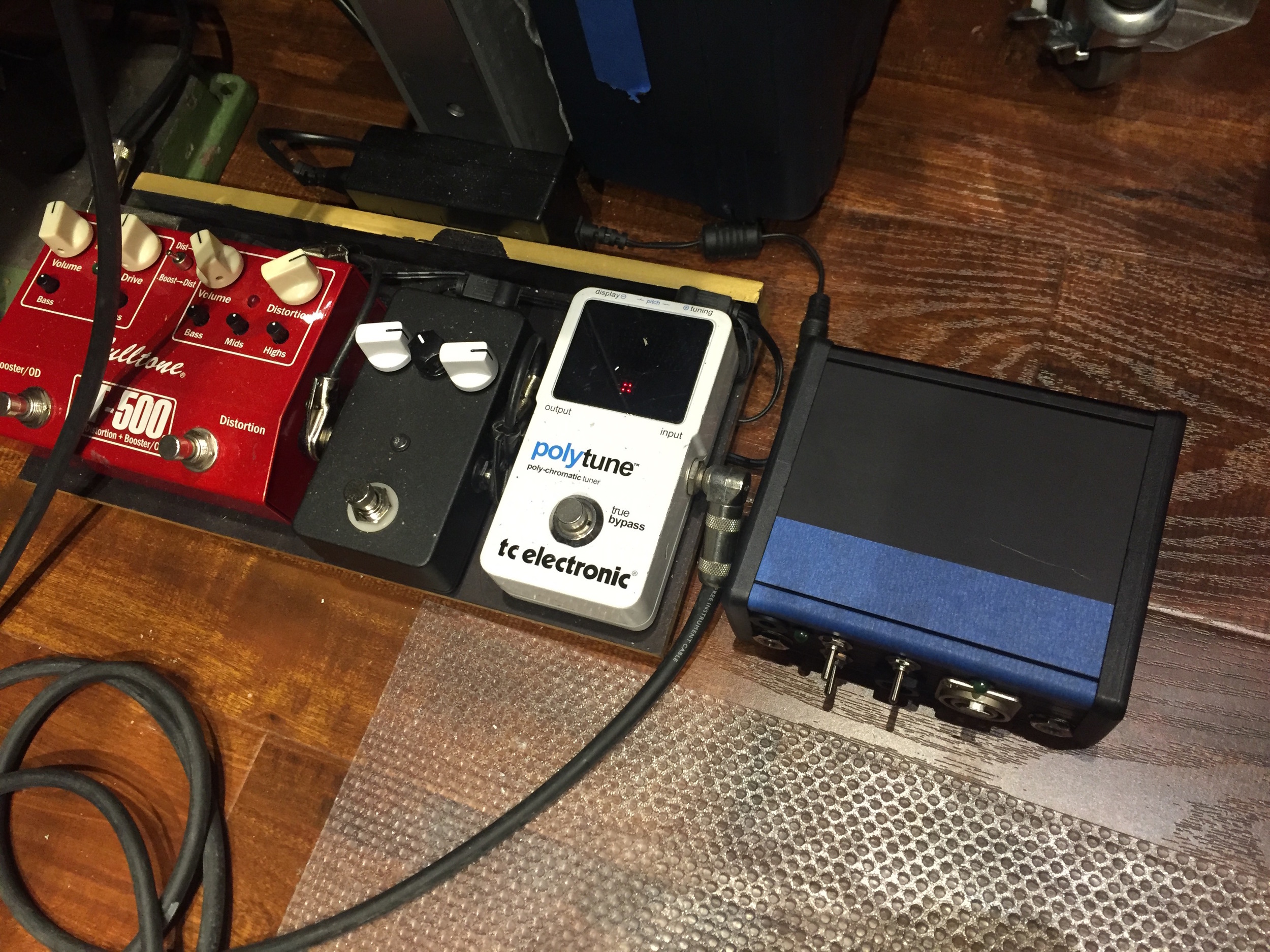
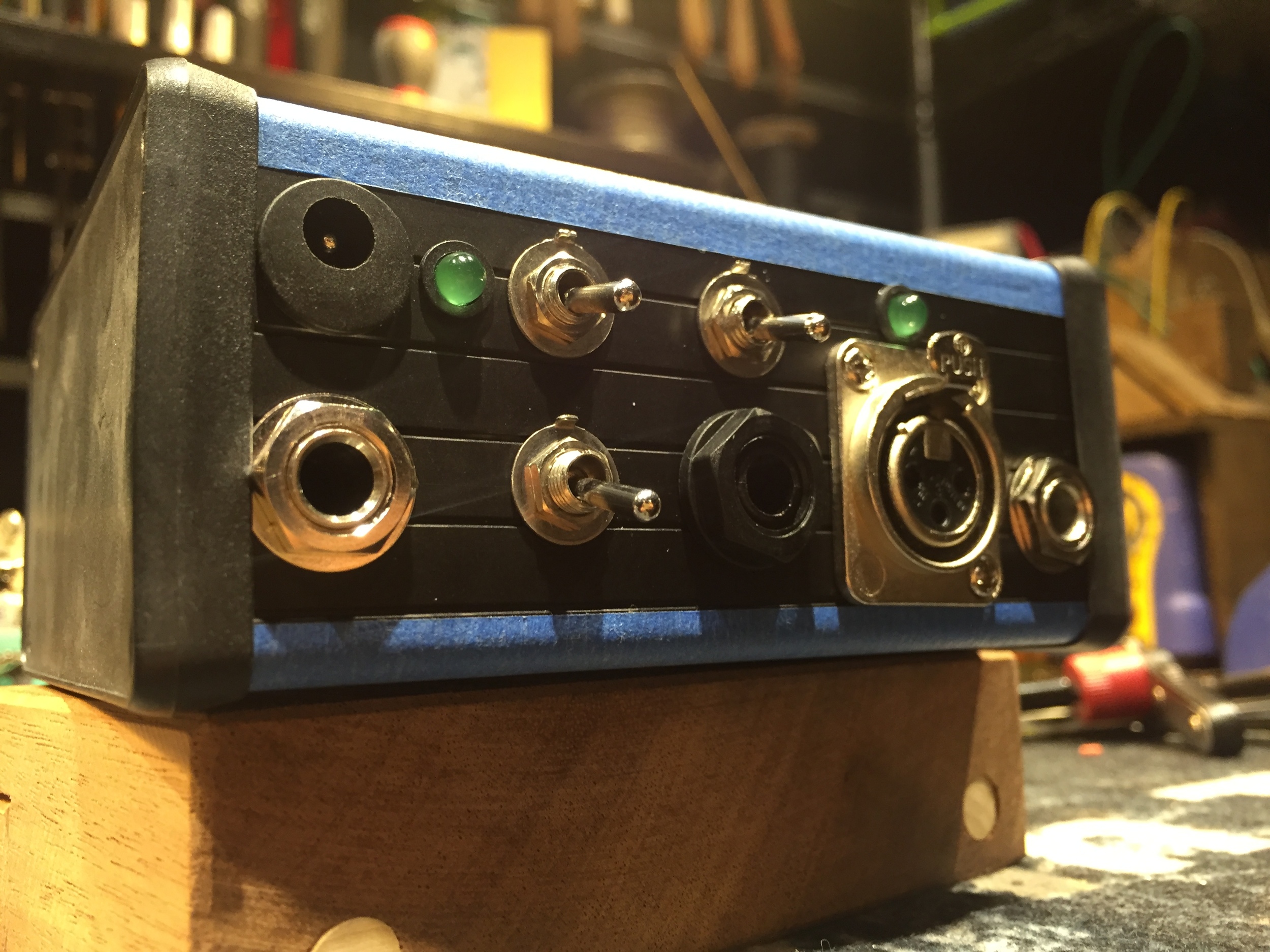
Here is the 'master' effects loop box we came up with. It will end up connecting to a 'slave' box on the center-stage board. It has a built-in buffer designed for driving long cables, an XLR jack where send and return signals would travel through (in the same cable), a 1/4" jack, that is isolated to send 9VDC. The switches are to turn on/off the buffer, bypass the effects loop, and to activate a ground lift on the XLR jack. The LEDs indicate the status of the buffer and the effects loop. All the jacks and switches are kept to the side of the box to allow a pedal to stack on top.
More on this effects loop box will be discussed in a future post. Stay tuned!

